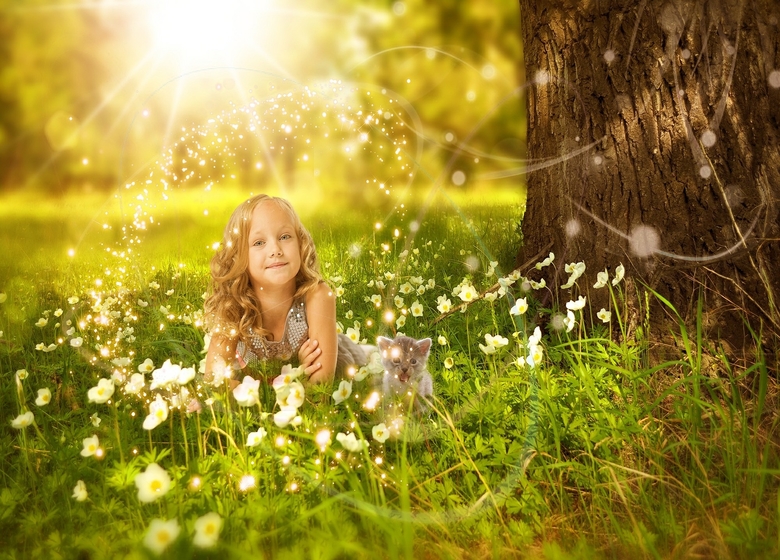Every child is curious. They ask several questions and some of them may even amaze you at times. But it is up to you to provide them with the right kind of information. This is their age to grow and develop into a smarter and more aware human being. Children are often very attached to nature as they grow. The constant nagging to be outside and the way they run in the gardens and want to stand in the rain. But you may have failed once or twice when they pointed to the clouds or huge trees and asked you their doubts.
We have collected some amazing facts related to nature. They are all about plants, different weather and also clouds because they seem to interest the child’s eyes a lot. This may even make them an outstanding student in their classroom!
Plant Facts
- Some plants are carnivores, gaining nutrients by eating various small insects and spiders. A well-known example of a carnivorous plant is the Venus Flytrap.
- While using energy from sunlight, plants turn carbon dioxide into food in a process called photosynthesis.
- Around 2000 different types of plants are used by humans to make food.
- There are over 200,000 identified plant species and the list is growing all the time.
- Bamboo can be a fast-growing plant; some types can grow almost a metre (3.28 feet) in just one day!
- Tree resin which has been fossilized is known as amber, it sometimes contains plant material or small animals that were trapped inside.
- In the agricultural industry, to ensure crops of food grow well water is often added to soil in the form of irrigation.
- Fertilizers are chemicals added to plants to help them grow. Important elements in fertilizers include nitrogen, phosphorus and potassium. Manure (animal waste) is also used as a fertilizer.
- Plant matter found at the bottom of areas with water such as swamps can eventually turn into coal due to a process called metamorphosis (changing form).
Weather Facts
- The highest temperature ever recorded in Antarctica is 14.6 °C (59 °F), recorded on January 5, 1974.
- The most rainfall ever recorded in 24 hours is 182.5 centimetres (71.9 inches) in Foc-Foc, La Réunion, during tropical cyclone Denise on January 8, 1966.
- The most rainfall ever recorded in one year is 25.4 meters (1000 inches) in Cherrapunji, India.
- The highest snowfall ever recorded in a one year period was 31.1 meters (1224 inches) in Mount Rainier, Washington State, United States, between February 19, 1971 and February 18, 1972.
- The fastest wind speed ever recorded is 484±32 km/h (301±20 mph). This was a 3 second gust recorded by a Doppler on Wheels (DOW) radar unit in Oklahoma City on May 3, 1999.
- The heaviest hailstone ever recorded weighed 1.0 kg (2.25 lb) and landed in Gopalganj District, Bangladesh on April 14, 1986.
- Clouds can be categorized into a number of different types; these include cumulus, stratus and cirrus.
-
The Earth experiences millions of lightning storms every year, they are incredible discharges of electricity from the atmosphere that can reach temperatures close to 54,000 °F (30,000 °C) and speeds of 60,000 m/s (130,000 mph).
- The USA has more tornadoes than any other country in the world, averaging around 1200 a year. This is due largely to its unique geography which forms an area in central USA called “Tornado Alley” which is frequently hit by tornadoes.
- Tropical cyclones (often referred to as hurricanes or typhoons) feature strong winds, driving rain, rough seas and areas of low atmospheric pressure. They frequently form in tropical areas of the globe and can do considerable damage to populated areas. Examples of this include the 1970 Bhola cyclone, Typhoon Nina which hit China in 1975 and more recently in 2005 when Hurricane Katrina which caused great devastation and loss of life when it hit southern parts of the USA.
Cloud Facts
- A cloud is a large group of tiny water droplets that we can see in the air.
- Clouds are formed when water on Earth evaporates into the sky and condenses high up in the cooler air. Learn more about the water cycle.
- Rain, snow, sleet, and hail falling from clouds is called precipitation.
- Most clouds form in the troposphere (the lowest part of Earth’s atmosphere) but occasionally they are observed as high as the stratosphere or mesosphere.
- Clouds can contain millions of tons of water.
- There is a range of different types of clouds, the main types include stratus, cumulus, and cirrus.
- Stratus clouds are flat and featureless, appearing as layered sheets.
- Cumulus clouds are puffy, like cotton floating in the sky.
- Cirrus clouds are thin and wispy, appearing high in the sky.
- There are many variations of these 3 main cloud types including stratocumulus, altostratus, altocumulus, cirrostratus, and cirrocumulus.
- Fog is stratus type of cloud that appears very close to the ground.
- Clouds can also be made of other chemicals.
- Other planets in our Solar System have clouds. Venus has thick clouds of sulfur-dioxide
- Jupiter and Saturn have clouds of ammonia.
This sums up a lot about Nature and variations of weather. The facts about clouds will also amaze your child and now you can learn and have fun at the same time!
Also read – Facts about Sun, Moon and the Stars for your kid













